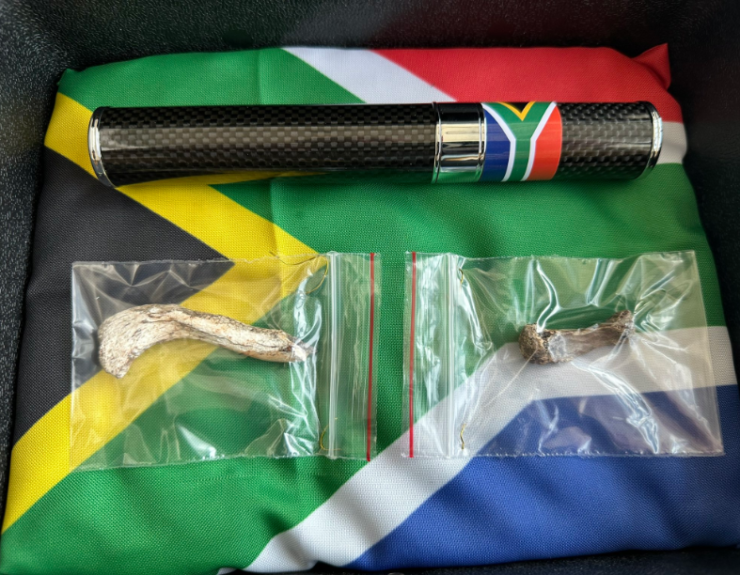The decision to send the ancient remains of human relatives into space has angered archaeologists.
It was a scientific first. The fossilized remains of ancient human relatives were carried aboard a spacecraft by Virgin Galactic on September 8.
The remains belonged to ‘Australopithecus sediba’ and ‘Homo naledi‘, both closely related to the human species. Experts said it was a major breach of ethics to take them to the edge of space.
Lee Berger, a National Geographic Society researcher and director of the Centre for the Exploration of the Deep Human Journey at the University of the Witwatersrand in South Africa, is one of the people who played a major role in uncovering the existence of the species. Berger chose the fossils to board the space ship, a decision that divided the worlds of science and archaeology.
The remains included a 2 million year old fragment of A. sediba’s clavicle and a 300,000 year old thumb bone from H. naledi.
Berger said in the statement: “The journey of these fossils into space represents humankind’s appreciation of the contribution of all of humanity’s ancestors and our ancient relatives. Without their invention of technologies such as fire and tools, and their contribution to the evolution of the contemporary human mind, such extraordinary endeavors as spaceflight would not have happened.”
But archaeologists disagree, saying that they cannot make sense of this journey into the atmosphere and that their remains should not be taken there.
Alessio Veneziano, a biological anthropologist and co-organizer of the AHEAD conference (Advances in Human Evolution, Adaptation and Diversity), outlined some of the reasons for the community’s frustration in a post on X/Twitter:
“Several scientists, philosophers and institutions aim to clarify the ethics surrounding anthropological and archaeological material (e.g. repatriation): sending hominin material into space for no apparent scientific purpose disrespectfully defies these efforts. It misrepresents the field of Paleoanthropology, thus doing a disservice to the public and researchers alike.”
There is no scientific justification for space flight, it has been argued. According to Justin Walsh, professor of art and archaeology at Chapman University in California, the impact of spaceflight on ancient remains is “not a scientific field of study”.
Bioarchaeologist Sonia Zakrzewski of the University of Southampton had a similar reaction: “I am horrified that they were granted a permit. This is NOT science” and suggests that she could use this case to teach ethics in her classes.
What do you think? I am waiting for your opinions in the comments.

Of course it’s not science, nor was it scientific. It was symbolic / religious / ritualistic / utterly human behavior.
You know, like how ancient people used to do, with elaborate burials, rituals, and even reburying ancestors in newly settled lands. Human stuff. The kind of stuff humans do, when they feel emotions about things. Symbolic acts, revering of ancestors, it never went away. Humans haven’t changed, despite having cell phones and space ships.
You would think any student of human history would comprehend that.